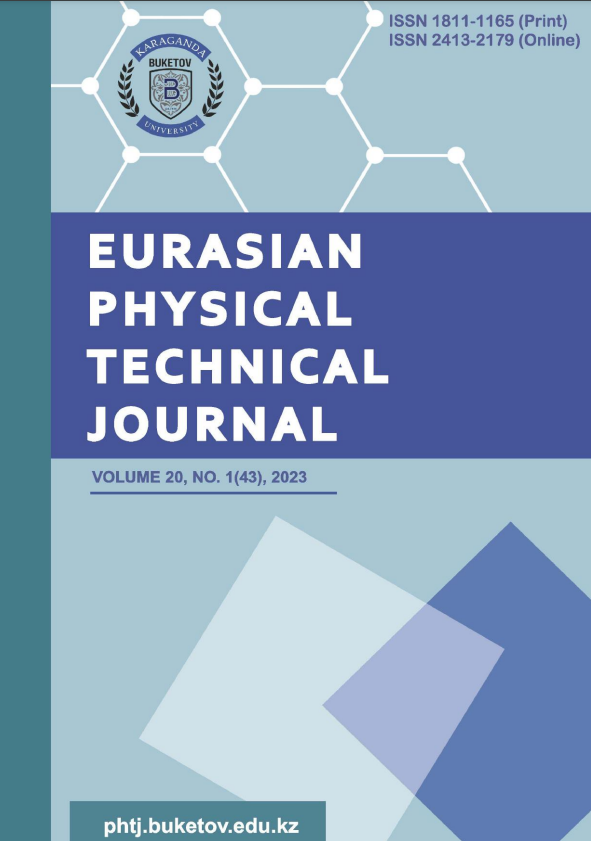Project for modifying the setup for Adron-55 to improve its background characteristics and a review of unsolved problems in studies of Extensive Air Showers
DOI:
https://doi.org/10.31489/2023No1/73-79Keywords:
cosmic rays, extensive air showers, high-energy particles, ionization calorimeter, penetrating componentAbstract
The article presents an overview of modern problems in studies of Extensive Air Showers and works devoted to their investigation. It is demonstrated that over the past decade convincing evidence of the presence of a neutron component has been demonstrated. When designing experimental facilities aimed at studying the nature of cosmic rays, this must be taken into account, since fast neutrons that arise outside the working volume can adversely affect the interpretation of the obtained data. In particular, if one tries to reveal the nature of penetrating component this effect is at most importance. Studies of biological shielding for the high flux research reactor PIK reactor at the Kurchatov Institute have shown that effective shielding from such neutrons can be provided by polyethylene in combination with borated rubber. At the same time, the use of boron-containing polyethylene does not lead to a significant improvement in protection, however, it significantly increases its cost. Based on foregoing, a modification of the hadron calorimeter protection is proposed to improve its protection it from the influence of the fast neutrons.
References
Hess F. V. On the Observations of the Penetrating Radiation during Seven Balloon Flights. History and Philosophy of Physics, 2018, p. 15.
Dedenko L.G., Fedorova G.F., Fedunin E.Yu. The GZK Paradox and Estimation of Energy of the Primary Cosmic Rays. Proceedings of the 28th Intern. Cosmic Ray Conference. 2003, pp. 643-646.
Kulikov G.V., Khristiansen G.B. On the size distribution of extensive atmospheric showers. JETP lett. 1959, Vol. 35 (8), No. 3, pp. 635-640.
Stanev T. Cosmic Rays and Etensive Air Showers. Elastic and Diffractive Scattering. Proceedings, 13th International Conference, Blois Workshop, CERN, Geneva, Switzerland, 2009, p. 7.
Nikolsky S.I., Feinberg E.L., Pavluchenko V.P., Yakovlev V.I. HEW particles in superhigh energy cascades. Preprint FIAN, 1975,Vol. 69. [in Russian]
Dremin I.M., Yakovlev V.I. Topics on Cosmic Rays. 60th Anniversary of C.M.G. Lattes. Campinas. 1984,Vol. 1, p. 122.
Zhang B.-B., Zhang Z.J., Zou J.-H. A hyper flare of a weeks-old magnetar born from a binary-neutron-star merger. High Energy Astrophysical Phenomena, Nanjing 210093, China, 2022, p. 17. doi: 10.48550/arXiv.2205.07670.
Pan Y.Y., Li Z.S., Zhang C.M., Zhong J.X.. Study on the magnetic field strength of NGC 300 ULX1 Monthly Notices of the Royal Astronomical Society. 2022, Vol.513, Issue 4, pp. 6219-6224.
Zatsepin G.T., Kuzmin V.A. About the upper limit of the spectrum of cosmic rays Letters to ZhETF. 1966, Vol. 4, No. 3, pp. 114-117. [in Russian]
Greisen K. End to the Cosmic-Ray Spectrum? Physical Review Letters. 1966, Vol. 16, No. 17, pp. 748-750.
Arahonian F.A., Timokhin A.N., Plyasheshnikov A.V. On the origin of highest energy gamma-rays from Mkn 501. A&A 2002, Vol. 384, No. 3, pp. 834-847, doi: 10.1051/0004-6361:20020062.
Fargion D., De Sanctis Lucentini P.G., Khlopov M.Y. How can we explain last UHERC anisotropies? arXiv:2210.14365, 2022, 10, 25p. Available at: https://inspirehep.net/literature/2170955
Schegolev O.B. Study of hadronic features of air showers by the method of registration of thermal neutrons. Available at : https://www.inr.ru/rus/referat/disser16.html, (June 2, 2016). [in Russian].
Erlykin A.D., Machavariani S.K. About origin of a break in the energy spectrum of cosmic rays. KSF FIAN. 2021, No. 2, 27p. [in Russian]. doi:10.1140/epjc/s10052-021-09700-w
Stenkin Yu.V., Dzhappuev D.D., Valdes-Galicia J.F. Neutrons in extensive air showers. Nuclear physics. 2007, Vol. 70. No. 6., pp. 1123–1135. [in Russian]
Sadykov T.Kh., Argynova A.Kh., Argynova K.A. The research of interactions of cosmic radiation particles by the hybrid ionization calorimeter method. et al. NNC RK Bulletin. 2019, No. 4.,pp. 28-33. [in Russian]
Sadykov T.Kh., Argynova A.Kh., Zhukov V.V. Modernization of peripheral detectors of the Tian-Shan ionization-neutron calorimeter "Adron-55". Proceedings of NAS RK. Series of physico-mathematical, Vol. 338, No. 4, 2021, pp. 65-74. [in Russian]
Dobrzynski L., Blinowski K. Neutrons and Solid State Physics. London: Ellis Horwood Limited, 1994, 306p.
Serge E. Experimental Nuclear Physics, Vol. II. New York/London: Willey/Chapman and Hall, 1953, 600p. Available at: https://www.amazon.co.uk/Experimental-Nuclear-Physics-Segre-Morrison/dp/B000M0XHZ8
Stenkin Yu.V., et al. Study of "neutron bursts" with Mexico City neutron monitor. Astroparticle Physics. 2001,Vol. 16. No. 2, pp. 157-168.
Gromushkin D.M., Bogdanov F.A., Lakhonin A.A. Low-background n-detector for studying the neutron component of EAS. ECHAYA. Vol. 49. No. 1, 2018. [in Russian]













